All in one - Siemens Gigaset DX800A
The newest phone from Siemens Gigaset DX800A, the first of its kind multifunctional combine combining VoIP and ISDN, has come into my hands.
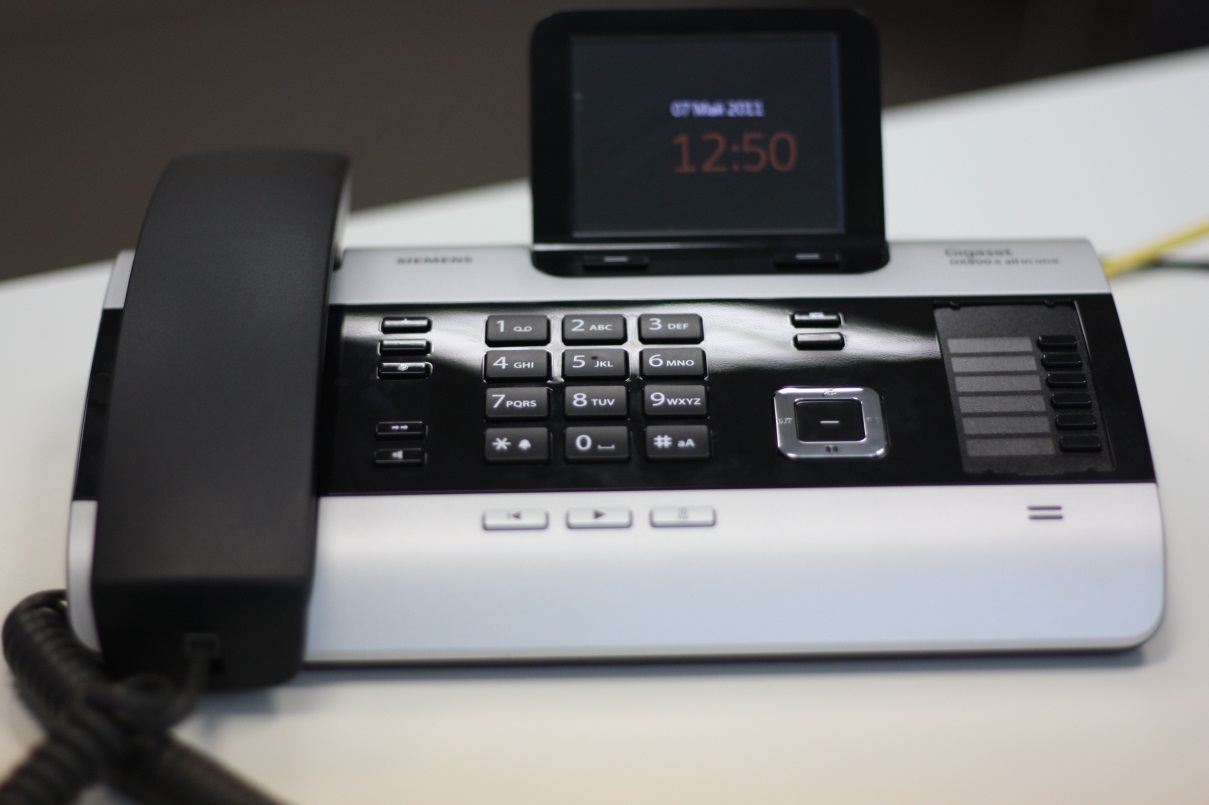
The buttons are conveniently located, but not signed - for full use you will have to study the user manual. There is a joystick, speed dial buttons - there is everything you need. The individual function keys are highlighted in green and red. The screen of the phone is informative enough, it shows the connection status of the Bluetooth headset or phone, time, date and calendar.
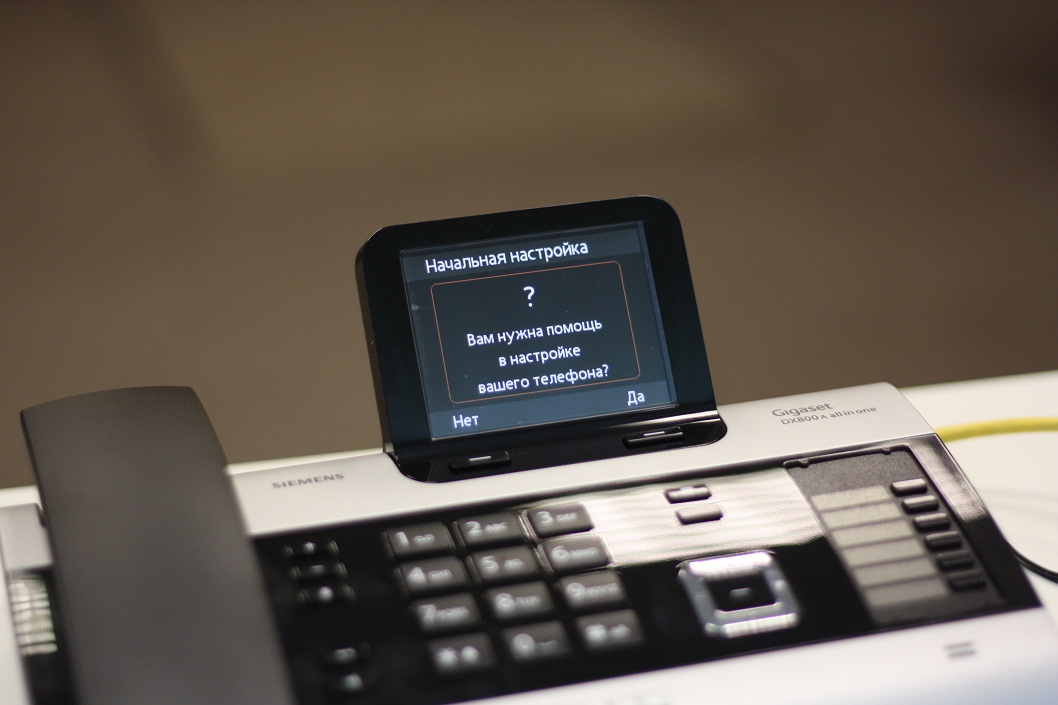
The glossy panel, emphasizing at the same time aesthetic, rigorous and stylish design, unfortunately, is quite branded - you will have to stock up on microfibre rags if you want the phone to look perfect.
The design of the phone, as I believe, was a success — it does not look like a typical SIP phone.
On the back of the phone are:
2 LAN ports, FAX = RJ11 connector, ISDN = RJ45 connector, RJ9 handset connector. On the side is a 2.5 mm headset jack.
For polklyucheniya fixed line with phone comes ISDN-> PSTN adapter
Here are the features that distinguishes the manufacturer:
• Desk phone with support for fixed telephone lines, VoIP and ISDN.
• Large color display and high sound quality.
• Up to four calls in parallel, connecting up to six handsets.
• Three built-in answering machine.
• Support for various types of communication: fixed telephone lines, VoIP and ISDN.
• 3.5-inch color display with an intuitive interface.
• Up to four calls in parallel, connecting up to six handsets.
• HDSP technology (G.722) provides high quality sound for internal and external calls.
• Three built-in answering machines with a total recording time of up to 55 minutes.
• Link2Mobile technology for making mobile calls (via Bluetooth).
• High-quality speakerphone.
• Phonebook for 1,000 vCard entries.
• ECO DECT and other energy-saving functions (night mode, transmitter off, etc.), professional work with contact information: access to online directories, synchronization with MicrosoftOutlook (using the GigasetQuickSync program).
• E-mail notifications (with the subject of the letter, the sender, the date of sending, the first lines of the message) and information services (RSS, news, weather forecast, etc.).
')
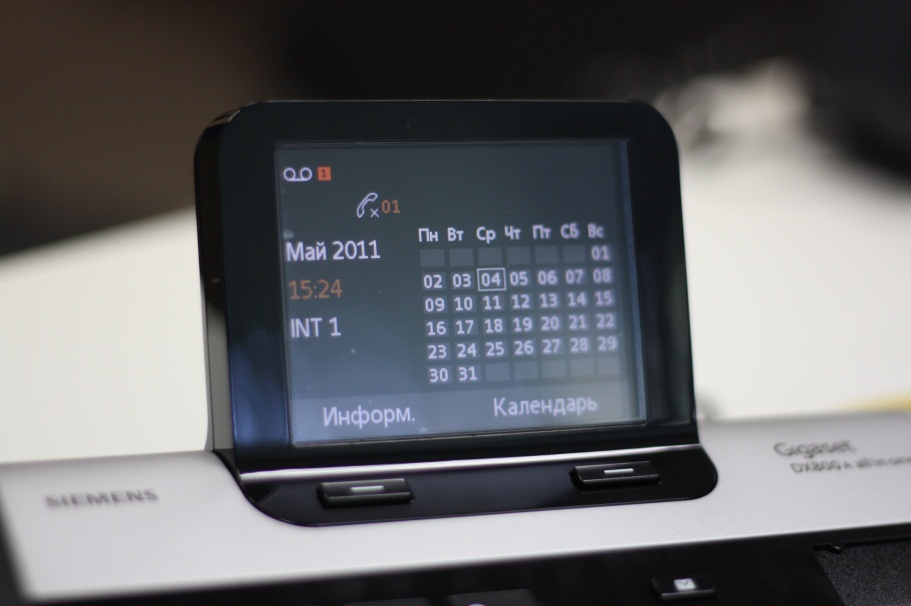
After turning on the phone, five minutes had not passed since he requested a firmware update. After flashing, the Russian language appears in the web interface. In order to get to it, you need to assign a pin-code of the device on the phone itself through its menu.
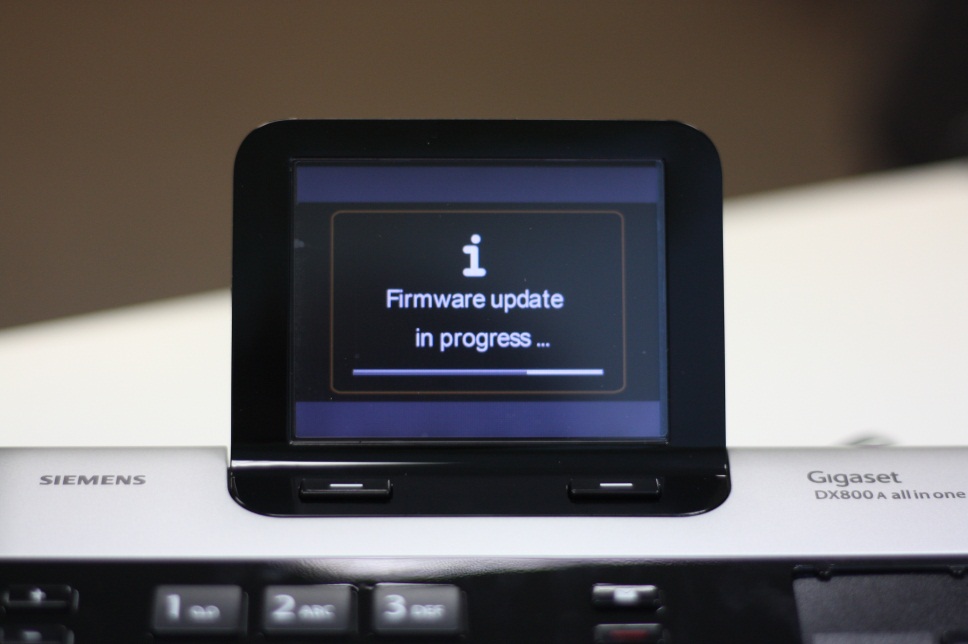
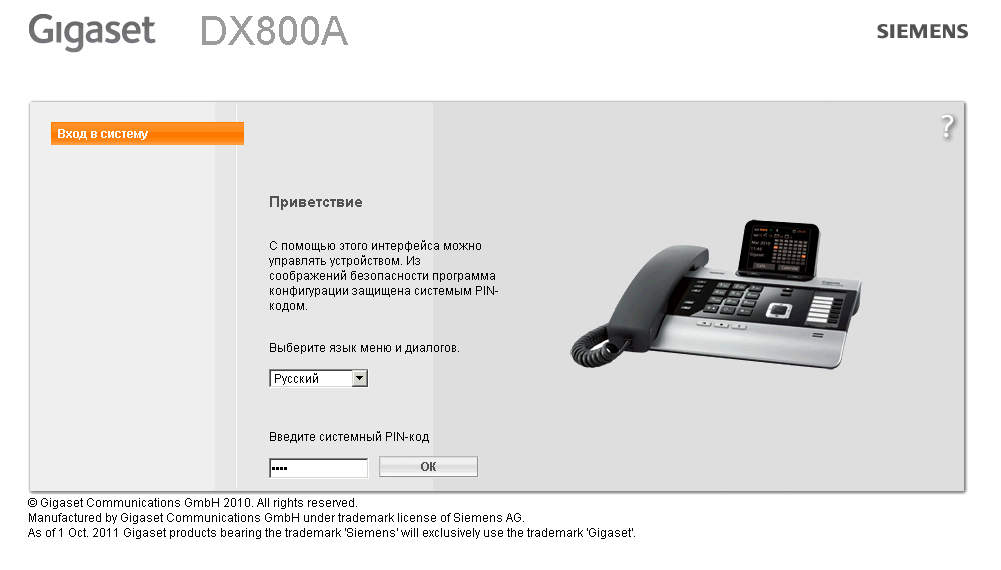
The Web Interface itself resembles that in the C470 IP model and is made in a typical color scheme. The setup is quite simple and was not difficult - the firmware already has preset parameters for all leading VoIP operators, including Russian ones.
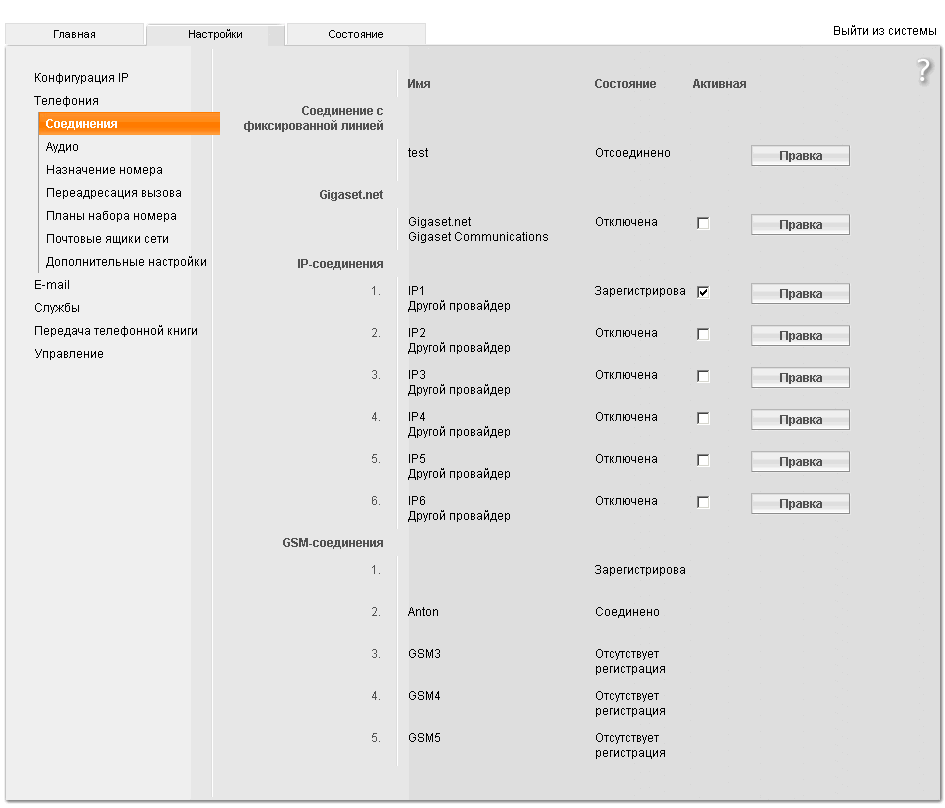
Also there are additional settings for the case if your operator is not pre-installed. Information about the registration of the line is not immediately available, I recommend to refresh the page, or re-access the web interface.
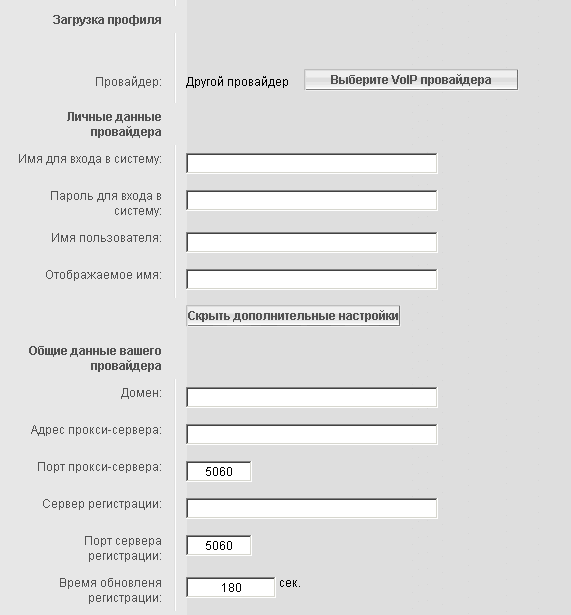
During testing, I did not register all six lines, I limited myself to two, I hung up a DECT receiver on one of them.
On a landline phone, you can select an automatic outgoing call on one of the lines, be it VoIP, ISDN, fixed line, or Gigaset.com, or you will need to select a line each time you dial the number.
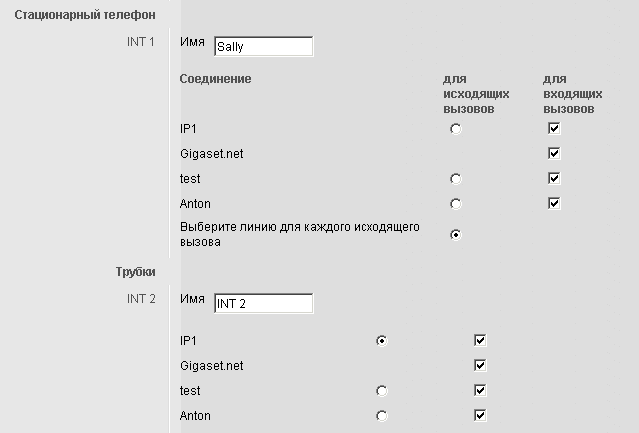
A convenient option is to connect a mobile phone via Bluetooth; it allows you to call from a cell phone via DECT handsets and from the landline phone itself.
You can also talk on the phone using a Bluetooth headset, in this case I tested a bunch of Plantronics 975 phone + headset. As it turned out, this is very convenient, though the headset did not always receive the call from the first press.
The call transfer function is also present, its setting is implemented via the web interface.
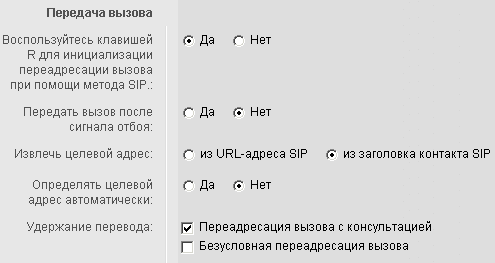
The new product Gigaset will appeal to many users who want to save money on calls. It bribes a lot of functionality and the potential of using a phone in a small office, by purchasing additional handsets for employees, you can make 4 calls at the same time - and you can call via VoIP 6 lines, ISDN, PSTN, from mobile phones. Very convenient is the ability to synchronize contacts with Microsoft Outlook.
Such a phone lacks only information on the workload of lines / additional handsets and a larger screen.

Appearance
The buttons are conveniently located, but not signed - for full use you will have to study the user manual. There is a joystick, speed dial buttons - there is everything you need. The individual function keys are highlighted in green and red. The screen of the phone is informative enough, it shows the connection status of the Bluetooth headset or phone, time, date and calendar.

The glossy panel, emphasizing at the same time aesthetic, rigorous and stylish design, unfortunately, is quite branded - you will have to stock up on microfibre rags if you want the phone to look perfect.
The design of the phone, as I believe, was a success — it does not look like a typical SIP phone.
On the back of the phone are:
2 LAN ports, FAX = RJ11 connector, ISDN = RJ45 connector, RJ9 handset connector. On the side is a 2.5 mm headset jack.
For polklyucheniya fixed line with phone comes ISDN-> PSTN adapter
Here are the features that distinguishes the manufacturer:
• Desk phone with support for fixed telephone lines, VoIP and ISDN.
• Large color display and high sound quality.
• Up to four calls in parallel, connecting up to six handsets.
• Three built-in answering machine.
• Support for various types of communication: fixed telephone lines, VoIP and ISDN.
• 3.5-inch color display with an intuitive interface.
• Up to four calls in parallel, connecting up to six handsets.
• HDSP technology (G.722) provides high quality sound for internal and external calls.
• Three built-in answering machines with a total recording time of up to 55 minutes.
• Link2Mobile technology for making mobile calls (via Bluetooth).
• High-quality speakerphone.
• Phonebook for 1,000 vCard entries.
• ECO DECT and other energy-saving functions (night mode, transmitter off, etc.), professional work with contact information: access to online directories, synchronization with MicrosoftOutlook (using the GigasetQuickSync program).
• E-mail notifications (with the subject of the letter, the sender, the date of sending, the first lines of the message) and information services (RSS, news, weather forecast, etc.).
In work
')

After turning on the phone, five minutes had not passed since he requested a firmware update. After flashing, the Russian language appears in the web interface. In order to get to it, you need to assign a pin-code of the device on the phone itself through its menu.


The Web Interface itself resembles that in the C470 IP model and is made in a typical color scheme. The setup is quite simple and was not difficult - the firmware already has preset parameters for all leading VoIP operators, including Russian ones.

Also there are additional settings for the case if your operator is not pre-installed. Information about the registration of the line is not immediately available, I recommend to refresh the page, or re-access the web interface.

During testing, I did not register all six lines, I limited myself to two, I hung up a DECT receiver on one of them.
On a landline phone, you can select an automatic outgoing call on one of the lines, be it VoIP, ISDN, fixed line, or Gigaset.com, or you will need to select a line each time you dial the number.

A convenient option is to connect a mobile phone via Bluetooth; it allows you to call from a cell phone via DECT handsets and from the landline phone itself.
You can also talk on the phone using a Bluetooth headset, in this case I tested a bunch of Plantronics 975 phone + headset. As it turned out, this is very convenient, though the headset did not always receive the call from the first press.
The call transfer function is also present, its setting is implemented via the web interface.

findings
The new product Gigaset will appeal to many users who want to save money on calls. It bribes a lot of functionality and the potential of using a phone in a small office, by purchasing additional handsets for employees, you can make 4 calls at the same time - and you can call via VoIP 6 lines, ISDN, PSTN, from mobile phones. Very convenient is the ability to synchronize contacts with Microsoft Outlook.
Such a phone lacks only information on the workload of lines / additional handsets and a larger screen.
Source: https://habr.com/ru/post/119249/
All Articles